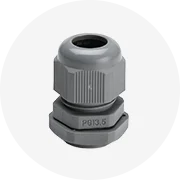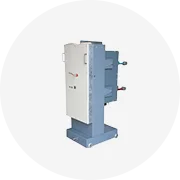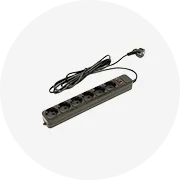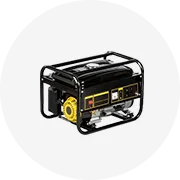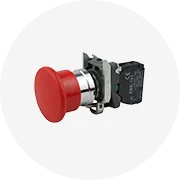



WK-319 Kälte Hand Werkzeuge Rollery Typ Kupfer Rohr Rohr Cutter
1,95 € - 2,14 €
Mindestbestellmenge: 120 Stück






SK5 Teflon-Klinge-Sanitärschere professionelle heißschmelzrohr-Schere pvc-Piyusschneider selbstversiegelnder Ratschenschneider
1,86 € - 6,49 €
Mindestbestellmenge: 2 Stück







MIDDIA tragbarer Fischschneiderschneider 1 Zoll einziehbare gerippte Keramik-Zöpfschere Keramik-Angelschneider
3,43 € - 4,08 €
Mindestbestellmenge: 50 Stück
Versand pro Stück: 5,01 €







PPR Kunststoff Rohrverbindungen für heißwasserrohr alle Typen Preisliste und angebotene Schneid- und Bearbeitungsdienstleistung
0,1947 € - 0,2225 €
Mindestbestellmenge: 200 Meter
Versand pro Stück: 6,88 €







edelstahl-haushaltsschere 8 zoll gummi manuell papiergeschnitten schere büro-schere klein
Sofort lieferbar
0,4172 € - 0,8158 €
Mindestbestellmenge: 2 Stück
Versand pro Stück: 14,27 €







Kunststoff Luft schlauchs ch neider Kunststoff Rohrs chneide klemme Mini Rohrs ch neider
0,3801 € - 0,5099 €
Mindestbestellmenge: 1 Stück







SK5 Klinge Holz bearbeitungs legierung schere PVC PE PPR Kunststoff rohrs ch neiden Trimm schneider Mehrzweck-Gehrung schere
Sofort lieferbar
1,73 € - 6,45 €
Mindestbestellmenge: 1 Stück
Versand pro Stück: 13,19 €



SK5 Klinge Holzbearbeitung Legierungs-Schere PVC PE PPR Kunststoff Rohrschneiden Schneiden Schneider Mehrzweck Winkel-Scheren
1,97 € - 3,31 €
Mindestbestellmenge: 72 Stück
Versand pro Stück: 1,29 €






Economic and Reliable Manual PVC PPR Plastic Pipe Cutting Tools 3/4 inch Plastic Pipe Shears
0,8807 € - 1,35 €
Mindestbestellmenge: 100 Stück
Versand pro Stück: 16,13 €






DAJING 110mm großer PVC-Rohrs ch neider Hoch leistungs rohrs ch neider mit CE-Zertifikat Kunststoff rohrs chneid werkzeug Hand rohrs chere
11,04 € - 18,54 €
Mindestbestellmenge: 1 Stück






Tragbare Hand Sanitär werkzeuge Schneiden in 44mm manuellen Kunststoff Ppr Pe Pvc Rohrs ch neider Schere
1,57 € - 2,68 €
Mindestbestellmenge: 150 Stück






1/4 3/8 zoll Hose PVC PE PU Tube Scissors Stainless Steel Blade Garden Water Pipe Cutting Shears Cutting Tool
0,2689 € - 0,2967 €
Mindestbestellmenge: 50 Stück
Ähnliche Suchanfrage:
kunststoff-schneid schererohr metalls chereschere für pvc schneidenkunststoffs cheregummi-schneid scheremetall-schneidsc heren werkzeuge lieferantkunststoff schere lieferantkunststoff griff scherescheren samtrohr metalls cherekunststoff platte schneid schereverstärkungs schneide scherekunststoff platte schneid scheremilwaukee kunststoff rohrs chereschneid schere hören






45-90 Multifunktionswinkel-Gehrung schere PVC-Kunststoff rohrs ch neider Winkels chere Automatische Drahtschneidkanal-Gehrung verkleidung
Sofort lieferbar
3,25 €
Mindestbestellmenge: 100 Stück
Versand pro Stück: 30,36 €






Kunststoff ppr pe pert Rohrs chneid werkzeuge Rohrs ch neider Schere kalt interne PVC-Rohrs ch neider 50mm Schneid schere
4,64 € - 6,96 €
Mindestbestellmenge: 10 Stück

2022 Precision Ground Blade Konturierter Asche griff Gartenbaum schnitt Direkt vertrieb Fein polierte Hecken schere
10,98 € - 14,85 €
Mindestbestellmenge: 50 Sätze






Portable pipe cutter scissor PC-0815 cutter tools for plastic pipe
Sofort lieferbar
1,40 € - 4,64 €
Mindestbestellmenge: 1 Stück
Versand pro Stück: 17,56 €






Profession elles Hoch leistungs handwerkzeug Kunststoffs ch lauch Ratschen PVC Sanitär Rohrs ch neider Schere
2,97 € - 3,16 €
Mindestbestellmenge: 2000 Stück






Mini-Schlauch rohrs ch neider Schere Für PVC PE PU Nylon Kunststoff rohrs chneid werkzeuge Scheren zangen Schere, Rohrs ch neides chere
1,51 € - 2,40 €
Mindestbestellmenge: 1 Stück






NANWEI meist verkaufte 800W Wasser rohrs chere PVC-Rohrs ch neider Kunststoff-Wasser rohrs chere
45,78 € - 50,87 €
Mindestbestellmenge: 1 Satz






Telescopic stahl rohr hedge schere gartenarbeit Pruner Hedge Shear garten Hedge scher
Sofort lieferbar
6,35 € - 6,49 €
Mindestbestellmenge: 1 Stück
Versand pro Stück: 15,75 €






Profession elle Mini-Hecken schere mit langem Griff Baums chere Gartengeräte Hecken schere
2,80 €
Mindestbestellmenge: 240 Stück



JOHN TOOLS 45-135 Degree Angle Scissor Multifunctional Angle Miter Shear Blade PVC PE Plastic Pipe Trim Cutter
1,86 € - 4,64 €
Mindestbestellmenge: 500 Stück






VERTAK ODM Garten Hands chnitt Bäume Schere Lang griff Hecken schere
2,91 € - 3,18 €
Mindestbestellmenge: 1200 Stück
Versand pro Stück: 25,34 €






Mehrwinkel-Drahtschlitz-Schere Mitre Dichtungs-Schneider 0-135 Grad multifunktionale Handschere 9 Zoll PVC PE Kunststoff Rohrschere
1,58 € - 10,20 €
Mindestbestellmenge: 100 Stück
Versand pro Stück: 1,76 €






PVC-Trunking-Schere 45 Grad Schere für Gummi rohr Kunststoffs ch neiden C.
3,84 € - 4,73 €
Mindestbestellmenge: 2 Stück






Haushalts schere Bonsai profession elle Schnitts chere Langs tiel Wellen kante Gartens chaf Baum Zaun schneiden schwarze Hecke Schere
3,34 € - 3,71 €
Mindestbestellmenge: 1200 Stück






Einziehbares Rohrgriff-Design SK5 Hartstahl-Gartens chere
Sofort lieferbar
12,06 € - 13,91 €
Mindestbestellmenge: 1 Stück
Versand pro Stück: 43,97 €






PPR-Cutter PPR-Rohrs chere PVC-Schnell schneiden Aluminium-Kunststoff-Rohrs ch neider PPR-Schnell schneiden
0,8807 € - 1,11 €
Mindestbestellmenge: 1000 Stück






Winkels chere 0-135 Grad Gehrung schere Abstellgleis Draht PVC/PE Kunststoff rohrs ch lauch Kanal Kofferraums ch neider Hausarbeit Sanitär werkzeug
Sofort lieferbar
10,09 € - 10,73 €
Mindestbestellmenge: 20 Stück
Versand pro Stück: 2,21 €






SALI Rohrs ch neider Industrie qualität PVC Cutter Kunststoff Rohrs ch neider Rohr Schnell schnitt Schlauchs ch neiden Handwerkzeuge Schere
Sofort lieferbar
2,36 € - 2,60 €
Mindestbestellmenge: 48 Stück
Versand pro Stück: 0,8807 €






Hochleistungs-Elektrikers chere Mehrzweck schere mit geraden geraden Klingen aus rostfreiem Stahl
Sofort lieferbar
0,8343 € - 1,03 €
Mindestbestellmenge: 100 Stück
Versand pro Stück: 4,92 €






SENGXIN kabellose Elektro-/Strom-/Wasserrohrschere mit Lithium-Batterie geschnittenen Schneiderscheren
Sofort lieferbar
57,59 € - 59,44 €
Mindestbestellmenge: 1 Box
Versand pro Stück: 17,56 €






Kunststoff kleine PVC Rohrs ch neider Sanitär Fußboden heizung pert Rohrs ch neider mehr schicht ige Pex al Pex Rohrs chere
0,8343 € - 0,927 €
Mindestbestellmenge: 10 Stück






Winkels chere 0-135 Grad Gehrung schere Abstellgleis Draht PVC/PE Kunststoff rohrs ch lauch Kanal Kofferraums ch neider Hausarbeit Sanitär werkzeug
Sofort lieferbar
10,51 € - 11,18 €
Mindestbestellmenge: 20 Stück
Versand pro Stück: 2,03 €





Großhandel professionelle Kunststoff-Pippenschere Wasserschnittwerkzeug Metall robust PU PP PE Wasserschlauch Schlauch Schneidwerkzeug
2,32 € - 3,16 €
Mindestbestellmenge: 5 Stück
Versand pro Stück: 8,72 €






Doz heißer Verkauf Kunststoff rohrs ch neider Rohrs cher schnitte Kupfer, Aluminium, Metall
8,34 € - 12,05 €
Mindestbestellmenge: 500 Stück






Miter-Scheren einstellbare Winkelschere 45 bis 135 Grad Miter-Schneider multifunktionale Schneideschere für Holz Kunststoff PVC
2,04 € - 2,31 €
Mindestbestellmenge: 2 Stück
Versand pro Stück: 4,40 €






Nanwei kabellose elektrische Energie-/Wasserrohrschere mit Lithium-Batterie geschnittene Schneidenscheren
23,83 € - 29,11 €
Mindestbestellmenge: 2 Stück





Multifunktion ale Winkel gehrung Scher klinge PVC PE Kunststoff rohr Trimm schneider 45-135 Grad Winkels chere
Sofort lieferbar
1,86 € - 4,64 €
Mindestbestellmenge: 200 Beutel
Versand pro Stück: 0,5284 €





Landwirtschaft liche Werkzeuge Gartens chere aus Kohlenstoffs tahl 20 Zoll Garten rasen zaun Große Schere
2,94 € - 3,87 €
Mindestbestellmenge: 50 Stück
Top-Kategorien
Über kunststoff-rohrs chere
Stöbern Sie durch die unzähligen effizienten. kunststoff-rohrs chere bei Alibaba.com für verschiedene Kabelkanal-, Verlege- und Installationszwecke. Diese langlebigen Produkte werden häufig für gewerbliche, industrielle und Haushaltsanwendungen eingesetzt. Das breite Spektrum von. kunststoff-rohrs chere, die auf der Website verfügbar sind, bestehen aus robusten Materialien, die nicht nur die Haltbarkeit dieser Artikel verbessern, sondern ihnen auch ein ansprechendes ästhetisches Aussehen verleihen. Führen. kunststoff-rohrs chere Lieferanten und Großhändler auf der Website bieten die Produkte zu ermäßigten Schnäppchenpreisen an.
Die Sorten von produktiven. kunststoff-rohrs chere auf der Website werden aus robustem PVC, verzinktem Metall und anderen starken Materialien für eine lange Lebensdauer zusammengebaut. Diese Produkte sind mit den neuesten technologischen Fortschritten synchronisiert, um eine optimale Leistung zu gewährleisten, z. B. das Organisieren und Schützen der darunter liegenden Drähte. Diese. kunststoff-rohrs chere sind umweltfreundlich und keine Stromleiter mit absolut flammhemmenden Eigenschaften. Wenn Sie den Kabelinstallationsprozess in Ihren Häusern oder für industrielle Bedienfelder durchführen möchten, diese. Mit kunststoff-rohrs chere funktioniert es für Sie.
Alibaba.com bietet großartige Arrays von. kunststoff-rohrs chere in mehreren Formen, Größen, Farben und Materialien, die sie je nach spezifischen funktionalen und ästhetischen Anforderungen unterscheiden. Sie haben sich mit vielen Merkmalen wie hoher Beständigkeit gegen Hitze, Feuer, Schock und Wasser entwickelt, wodurch sie sicher verwendet werden können. Diese. kunststoff-rohrs chere sind ebenfalls einfach zu installieren und verfügen über eine verbesserte elektrische Isolierung. Stahlversionen davon. kunststoff-rohrs chere sind ideal für industrielle Bedienfeldverkabelungen für Außenanwendungen.
Entdecken Sie die attraktiven Sortimente von. kunststoff-rohrs chere bei Alibaba.com und erhalten Sie sie für ein wirtschaftliches Budget, während Sie Geld sparen. Diese Produkte erfüllen die ISO-Zertifizierungsstandards und bieten eine vollständige Auswahl an Anpassungen. Sie können auch Produkte erhalten, die selbstklebende Eigenschaften aufweisen und außergewöhnliche Kabelretentionseigenschaften aufweisen.
Die Sorten von produktiven. kunststoff-rohrs chere auf der Website werden aus robustem PVC, verzinktem Metall und anderen starken Materialien für eine lange Lebensdauer zusammengebaut. Diese Produkte sind mit den neuesten technologischen Fortschritten synchronisiert, um eine optimale Leistung zu gewährleisten, z. B. das Organisieren und Schützen der darunter liegenden Drähte. Diese. kunststoff-rohrs chere sind umweltfreundlich und keine Stromleiter mit absolut flammhemmenden Eigenschaften. Wenn Sie den Kabelinstallationsprozess in Ihren Häusern oder für industrielle Bedienfelder durchführen möchten, diese. Mit kunststoff-rohrs chere funktioniert es für Sie.
Alibaba.com bietet großartige Arrays von. kunststoff-rohrs chere in mehreren Formen, Größen, Farben und Materialien, die sie je nach spezifischen funktionalen und ästhetischen Anforderungen unterscheiden. Sie haben sich mit vielen Merkmalen wie hoher Beständigkeit gegen Hitze, Feuer, Schock und Wasser entwickelt, wodurch sie sicher verwendet werden können. Diese. kunststoff-rohrs chere sind ebenfalls einfach zu installieren und verfügen über eine verbesserte elektrische Isolierung. Stahlversionen davon. kunststoff-rohrs chere sind ideal für industrielle Bedienfeldverkabelungen für Außenanwendungen.
Entdecken Sie die attraktiven Sortimente von. kunststoff-rohrs chere bei Alibaba.com und erhalten Sie sie für ein wirtschaftliches Budget, während Sie Geld sparen. Diese Produkte erfüllen die ISO-Zertifizierungsstandards und bieten eine vollständige Auswahl an Anpassungen. Sie können auch Produkte erhalten, die selbstklebende Eigenschaften aufweisen und außergewöhnliche Kabelretentionseigenschaften aufweisen.



